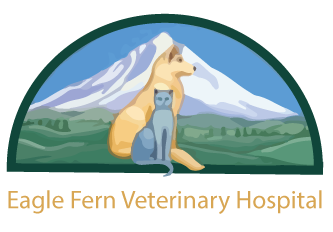|
 Surgery Tour Surgery Tour 
 Skip, the clinic cat, is wondering which patient in the hospital is next for surgery! Skip, the clinic cat, is wondering which patient in the hospital is next for surgery!
When your pet is admitted for surgery, our goal is to minimize the risks of anesthesia and surgery. We strive to provide comfort for your pet with effective pain management and loving nursing care during their hospital stay.
Your pet will be admitted to the hospital in the morning or night before surgery. The procedure will be done as early as possible to allow your pet to recover from anesthesia so they can be at home with you later that day.
Please take the "Surgery Tour" to view the procedures involved in a surgical or anesthetic procedure. Let us know if you have any questions or concerns before your pet has its' surgery.
Patient History
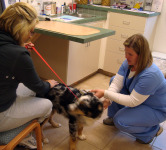 |
A thorough history aids in the evaluation of your pet. It is important to complete the medical history sheet as completely as possible.
|

|
The medical history includes the reason for surgery, diet, environment, preventive health care, current and past medical problems, and present medications your pet may be taking. Copies of your pet's health records if seen at another veterinary hospital should be provided for our veterinarians to review.
Pre-surgical Examination
 |
Your pet will be examined prior to the surgical procedure to help detect any potential health problems or additional issues that should be addressed while your pet is under anesthesia.
|
Common additional procedures that can be performed while your pet is under anesthesia are teeth or ear cleaning, microchip placement, nail trimming, vaccinations or lab tests.
If a potential problem is detected that would increase the risk of surgery or anesthesia, it will be investigated further before your pet is placed under anesthesia.
Pre-Surgical / Anesthesia Blood Screen
 |
We recommend screening your pet to help detect any underlying problems which may result in higher risk or complications during anesthesia or surgery.
|
Your pet's physical status and age as well as the type of procedure being performed will guide your veterinarian as to what level of screening is needed for your pet. Most screening can be done in our hospital's laboratory on the day of your pet's surgery. If more extensive testing is needed, it will be sent to our outside lab prior to the day of your pet's surgery.
Screening will help detect anemia, organ function, and clotting ability. If a problem is found, it could require a change in the anesthetic drugs used or postponing the procedure until the problem is further investigated and treated.
Pre-Anesthetic EKG
An electrocardiogram, EKG, evaluates the heart rate, rhythm, and size. Using telemedicine, we send your pet's EKG over the phone line! Within minutes it is evaluated by a board certified cardiologist. The specialist will report any abnormalities seen on the EKG, a risk assessment for anesthesia and how to manage the anesthesia or may recommend not to do the procedure. If abnormalities are found they will make recommendations for further testing.
Since we have been using the service, we have diagnosed many pets with heart problems which were not detected on the physical exam or by medical history alone.
Intravenous Fluids
 |
An intravenous catheter is placed to deliver intravenous fluids, anesthetic drugs, and medications. Having a catheter in place also provides a route to give drugs quickly into the circulation in case of an emergency, potentially saving your pet's life.
|
Providing intravenous fluids during an anesthetic procedure will help guard against low blood pressure and maintains hydration. This ensures that oxygen and nutrients continue to reach the vital organs. Overall, intravenous fluids will provide a higher level of safety during anesthesia for your pet.
Pain Management
 |
To ensure better comfort and safety for your pet, pain medication is given before, during and after surgery. Pain management includes a multi-modal approach using a combination of different types of pain medications or injections, transdermal pain patches and/or local anesthetic blocks.
|
Effective pain management is the key to safer anesthesia by allowing lower levels of anesthesia to be administered, leading to more stable blood pressures and breathing.
Pain/sedative medicaton is given before the procedure to reduce the level of pain experienced after surgery by preventing "wind-up" pain. Pain medication is continued during surgery and a few days post-operatively to keep your pet pain free and back to its old self quicker.
Anesthesia
 |
Your pet will first be given an injection of a pre-anesthetic consisting of a mild tranquilizer and pain medication. This is followed by a short acting anesthetic agent which allows your pet to be intubated -- a tube is passed down into the trachea. This allows anesthetic gas and oxygen to be delivered to the lungs. The level of anesthetic gas is controlled to keep your pet anesthetized during the procedure, allowing for a quick and safe recovery.
|

|
Anesthetic Monitoring
 |
Your pet will be monitored by our surgical technician throughout anesthetic induction, surgical preparation, the procedure and recovery. They will track your pet's temperature, blood pressure, tissue oxygen levels, pulse, heart and respiratory rate, EKG, and mucous membrane color and refill time.
|
Anesthetic monitoring guides the adjustments to be made to levels of anesthesia, oxygen, and intravenous fluids during the anesthetic procedure. This helps avoid potential problems during anesthesia.
Surgical Preparation
 |
Your pet is then prepped for surgery. The surgery area is shaved and vacuumed so that we have a surgical field, free of hair and debris. The area is then scrubbed with surgical scrub and alcohol in the prep room. The patient is then transferred to the surgery room, placed on a heated surgery table and hooked up to the monitoring equipment. The surgical scrub is then repeated.
|
Meanwhile, the surgeon, wearing a cap and mask, is also scrubbing at the scrub sink to prepare for surgery. Once in surgery, the surgeon puts on sterile gloves and a surgery gown. The sterile surgical instrument trays are unwrapped and opened, then sterile drapes are placed at the surgical site.
Surgery
 |
Dr. Hoeft is removing stones from the urinary bladder of the Bull Dog. |
|
|
The most common surgeries we perform are spays and neuters.
 During the spay, an abdominal incision is made. The ovaries and uterus are located, ligated and removed. Then, the abdominal wall, subcutaneous tissue and skin are sutured closed separately. A local anesthetic block is made at the incision site to lower pain. During the spay, an abdominal incision is made. The ovaries and uterus are located, ligated and removed. Then, the abdominal wall, subcutaneous tissue and skin are sutured closed separately. A local anesthetic block is made at the incision site to lower pain.
 During a neuter surgery, the testicles are exposed through one incision, ligated and removed. The subcutaneous tissue and skin are then sutured. The skin sutures in a neuter are placed within the skin so there are no external sutures. A local anesthetic block is made at the incision site to lower pain. During a neuter surgery, the testicles are exposed through one incision, ligated and removed. The subcutaneous tissue and skin are then sutured. The skin sutures in a neuter are placed within the skin so there are no external sutures. A local anesthetic block is made at the incision site to lower pain.
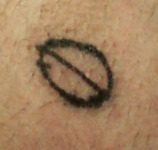 A universal symbol can be tattooed on your pet's lower abdomen, indicating that it has already been spayed or neutered. If your pet should be lost then found by a new owner or the animal control office, the tattoo would prevent an unnecessary anesthesia or surgery. A universal symbol can be tattooed on your pet's lower abdomen, indicating that it has already been spayed or neutered. If your pet should be lost then found by a new owner or the animal control office, the tattoo would prevent an unnecessary anesthesia or surgery.
|
Post-Op
 |
Post-operatively, the anesthetic is turned off. When your pet is awake enough, the endotracheal tube is removed and is transferred to the recovery area. There they are kept warm with a heat lamp and extra blankets and monitored by our pet care technicians.
|
|
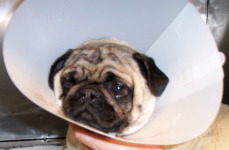
|
We recommend an 'Elizabethan collar' to help prevent your pet from licking or chewing at its incision which can cause irritation and possibly infection. If your pet removes its sutures, it may need to undergo additional anesthesia and surgery to replace them.
|
We will be happy to call you after your pet's surgery to notify you how the procedure went as well as when your pet is awake and ready to be picked up.
At discharge, the surgical technician will go over the procedure, post-op pain medication, any additional medications, and discharge instructions.
We will also call you at home the next day to be sure everything is going okay. Notify the technician of any concerns you may have at that time or any time during the recovery period.
Generally, if your pet had sutures they will be removed in 10-14 days, and drains in 3-5 days. You may make an appointment for these rechecks at your pet's surgery discharge. Keep your pet's activity limited for 10 days and do not bathe after surgery until the sutures are removed.
| 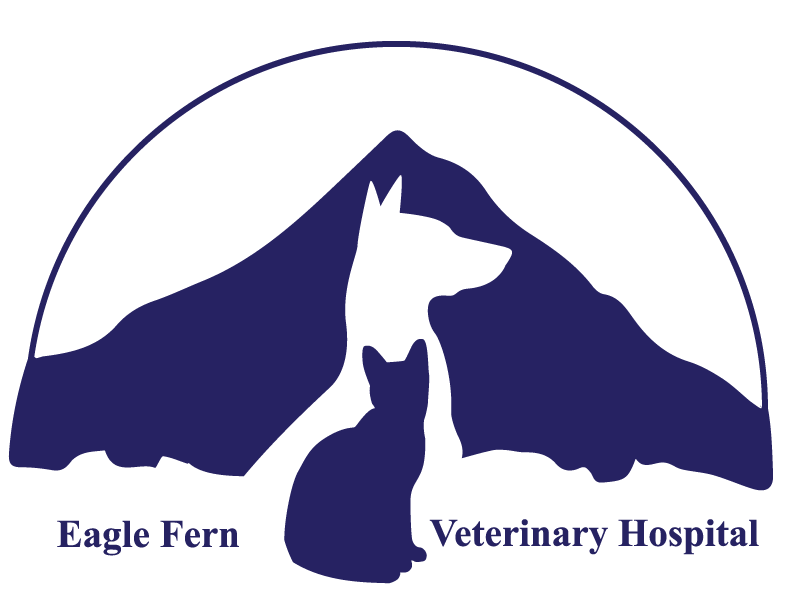
 Skip, the clinic cat, is wondering which patient in the hospital is next for surgery!
Skip, the clinic cat, is wondering which patient in the hospital is next for surgery! 



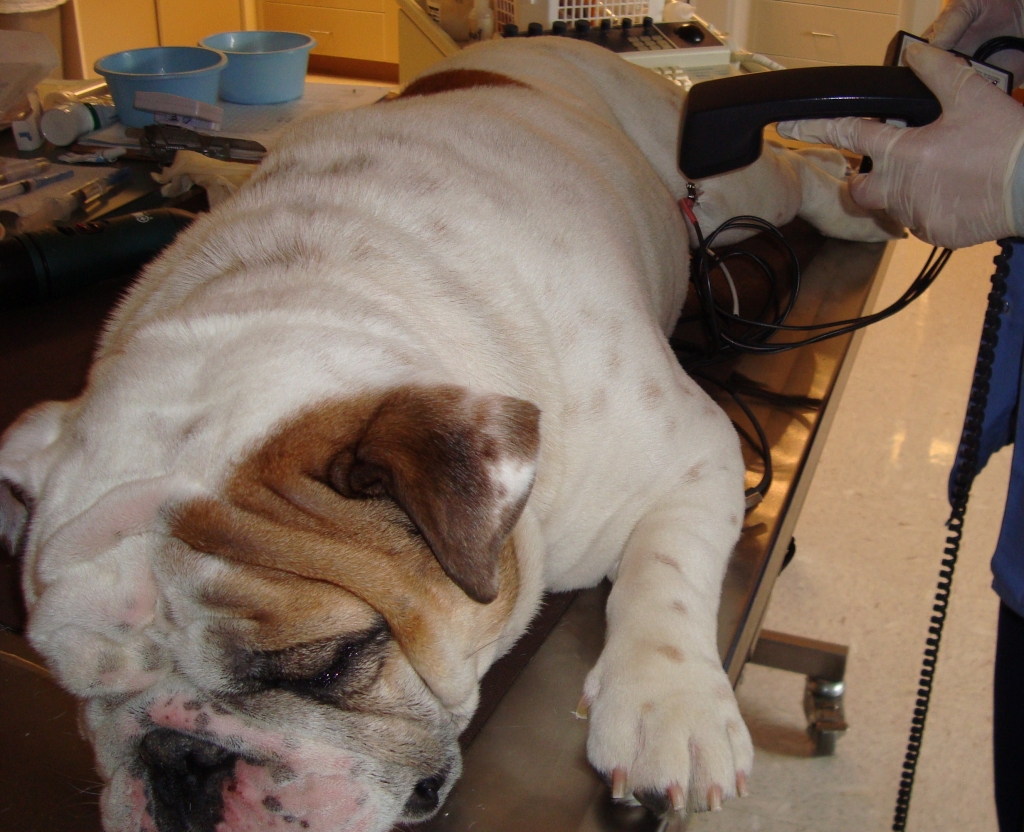









 During the spay, an abdominal incision is made. The ovaries and uterus are located, ligated and removed. Then, the abdominal wall, subcutaneous tissue and skin are sutured closed separately. A local anesthetic block is made at the incision site to lower pain.
During the spay, an abdominal incision is made. The ovaries and uterus are located, ligated and removed. Then, the abdominal wall, subcutaneous tissue and skin are sutured closed separately. A local anesthetic block is made at the incision site to lower pain.  During a neuter surgery, the testicles are exposed through one incision, ligated and removed. The subcutaneous tissue and skin are then sutured. The skin sutures in a neuter are placed within the skin so there are no external sutures. A local anesthetic block is made at the incision site to lower pain.
During a neuter surgery, the testicles are exposed through one incision, ligated and removed. The subcutaneous tissue and skin are then sutured. The skin sutures in a neuter are placed within the skin so there are no external sutures. A local anesthetic block is made at the incision site to lower pain. A universal symbol can be tattooed on your pet's lower abdomen, indicating that it has already been spayed or neutered. If your pet should be lost then found by a new owner or the animal control office, the tattoo would prevent an unnecessary anesthesia or surgery.
A universal symbol can be tattooed on your pet's lower abdomen, indicating that it has already been spayed or neutered. If your pet should be lost then found by a new owner or the animal control office, the tattoo would prevent an unnecessary anesthesia or surgery.

